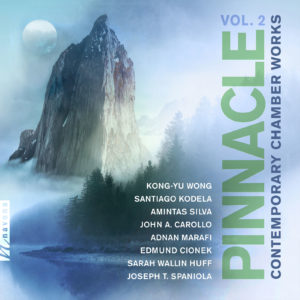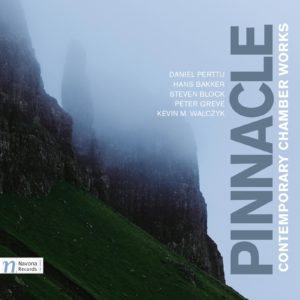Pinnacle Vol. 3
Dušan Bavdek composer
Alla Elana Cohen composer
Richard E Brown composer
Andrew Schneider composer
Navona Records presents PINNACLE VOL. 3, a collection of contemporary chamber works by composers Alla Elana Cohen, Andrew Schneider, Dušan Bavdek, and Richard E Brown that highlight the melodic, emotive, and dramatic styles offered by today’s chamber music. This diverse assortment of repertoire spans numerous influences and orchestrations, delivering a range of sounds from somber and moving to sprightly and energetic. Leveraging raw thematic material and colorful musical portraits, the composers and performers in this edition of PINNACLE keep the fire burning while bringing a fresh and unique tone to the series.
Listen
Stream/Buy
Choose your platform
Track Listing & Credits
| # | Title | Composer | Performer | |
|---|---|---|---|---|
| 01 | Capriccetto | Dušan Bavdek | Jakub Černohorský, violin; Tomáš Svozil, cello; Alexandr Starý, piano | 3:12 |
| 02 | String Quartet No. 1: I. Introduction | Dušan Bavdek | Benda Quartet | Jakub Černohorský, violin; Ondřej Pustějovský, violin; Petr Benda, viola; Tomáš Svozil, cello | 4:00 |
| 03 | String Quartet No. 1: II. Confrontations | Dušan Bavdek | Benda Quartet | Jakub Černohorský, violin; Ondřej Pustějovský, violin; Petr Benda, viola; Tomáš Svozil, cello | 6:24 |
| 04 | Watercolors of the Master Who is Accustomed to Paint Oils (Volume 1 Series 9): Movement I | Alla Elana Cohen | Karel Dohnal, clarinet; Martin Kasík, piano | 1:07 |
| 05 | Watercolors of the Master Who is Accustomed to Paint Oils (Volume 1 Series 9): Movement II | Alla Elana Cohen | Karel Dohnal, clarinet; Martin Kasík, piano | 2:04 |
| 06 | Watercolors of the Master Who is Accustomed to Paint Oils (Volume 1 Series 9): Movement III | Alla Elana Cohen | Karel Dohnal, clarinet; Martin Kasík, piano | 0:40 |
| 07 | Watercolors of the Master Who is Accustomed to Paint Oils (Volume 1 Series 9): Movement IV | Alla Elana Cohen | Karel Dohnal, clarinet; Martin Kasík, piano | 1:34 |
| 08 | Trio for Violin, Horn, and Piano: I. Adagio - Allegro moderato | Richard E Brown | Juventas New Music Ensemble | Oliver Caplan, artistic director; Anne Howarth, horn; Ryan Shannon, violin; Julia Scott Carey, piano | 5:44 |
| 09 | Trio for Violin, Horn, and Piano: II. Andante doloroso | Richard E Brown | Juventas New Music Ensemble | Oliver Caplan, artistic director; Anne Howarth, horn; Ryan Shannon, violin; Julia Scott Carey, piano | 4:09 |
| 10 | Trio for Violin, Horn, and Piano: III. Allegro con spirito | Richard E Brown | Juventas New Music Ensemble | Oliver Caplan, artistic director; Anne Howarth, horn; Ryan Shannon, violin; Julia Scott Carey, piano | 3:40 |
| 11 | Les Exubérants, Op. 11 | Andrew Schneider | Karel Dohnal, clarinet; Jan Souček, oboe | 4:34 |
| 12 | Les Enchanteresses Dansantes, Op. 12 | Andrew Schneider | Dieter Flury, flute; Karel Dohnal, clarinet; Lukáš Polák, cello | 5:39 |
Capriccetto, String Quartet No. 1
Recorded August 30-31, 2022 at Czech Radio Ostrava in Ostrava, Czech Republic
Producer Jan Košulič
Engineer Aleš Dvořák
Assistant Engineer Jan Balcar
Editing & Mixing Lucas Paquette
Watercolors of the Master Who is Accustomed to Paint Oils
Recorded July 8, 2022 at Czech TV Music Studio in Prague, Czech Republic
Producer Pavel Kunčar
Engineer Aleš Dvořák
Assistant Engineer Roman Sklenář
Production Manager Jean Noël Attard
Editing & Mixing Lucas Paquette
Trio for Violin, Horn, and Piano
Recorded February 16, 2022 at Shalin Liu Performance Center in Rockport MA
Producer Brad Michel
Engineer Tom Stephenson
Editing & Mixing Lucas Paquette
Les Exubérants
Recorded May 2, 2022 at The Chapel at Korunni in Prague, Czech Republic
Producer Jan Košulič
Engineer Aleš Dvořák
Editing & Mixing Melanie Montgomery
Les Enchanteresses Dansantes
Recorded May 2, 2022 at The Chapel at Korunni in Prague, Czech Republic
Producer Jan Košulič
Engineer Aleš Dvořák
Editing & Mixing Lucas Paquette
Additional Editing Melanie Montgomery
Mastering Melanie Montgomery
Executive Producer Bob Lord
A&R Director Brandon MacNeil
A&R Danielle Sullivan
VP of Production Jan Košulič
Production Director Levi Brown
Audio Director Lucas Paquette
Production Assistant Martina Watzková
VP, Design & Marketing Brett Picknell
Art Director Ryan Harrison
Design Edward A. Fleming, Morgan Hauber
Publicity Patrick Niland, Brett Iannucci
Artist Information
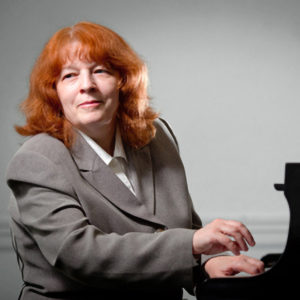
Alla Elana Cohen
Alla Elana Cohen is a distinguished composer, pianist, music theorist, and teacher who came to the United States in 1989 from Russia. Graduating from the Moscow State Tchaikovsky Conservatory with the highest honors of distinction, Cohen lives in Boston and is a professor at Berklee College of Music.
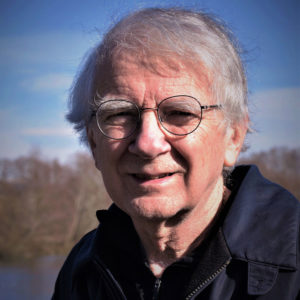
Richard E Brown
Richard E Brown, a native of New York State and has been active as a composer-arranger and music educator for many years. His training includes M.M. and D.M. degrees in composition from Florida State University, as well as a B.A. in music education from Central College, which named him a Distinguished Alumnus in 1983. His principal composition studies were with Carlisle Floyd, John Boda, and Charles Carter. He is a member of ASCAP and is represented in the catalogs of several trade publishers, as well as his personal imprint Dacker Music.
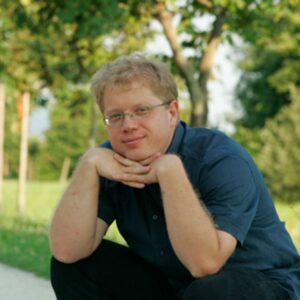
Dušan Bavdek
Dušan Bavdek (b. Slovenia, 1971) is a composer and professor of composition and music theory as well as a vice dean for international affairs at the University of Ljubljana Academy of Music. His compositional opus encompasses pieces for symphony orchestra, string orchestra, wind orchestra, opera, ensembles, chamber groups, and soloistic performance.
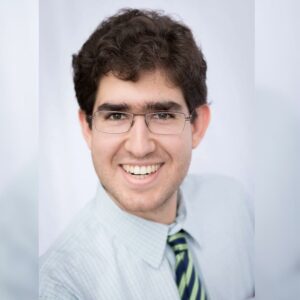
Andrew Schneider
A native of Houston, Andrew Schneider is a composer, pianist, and vocal coach whose virtuosic technique and daring interpretation has cemented his reputation among clients as a fearless musician. His extensive collaborative activity encompasses early music, standard operatic and art song repertoire, as well as contemporary music. Proficient for coaching purposes in French, German, Italian, and Latin, as well as adept with less frequently encountered languages, especially Slavic ones, Schneider enjoys using his considerable linguistic skill to help make challenging texts accessible to his clients. His wide ranging musical activities also include harpsichord and organ performance and conducting.
Notes
Videos
In-Studio Performance: Andrew Schneider – Les Enchanteresses Dansantes, Op. 12
In-Studio Performance: Andrew Schneider – Les Exubérants, Op. 11
An Inside Look: music from Andrew Schneider
